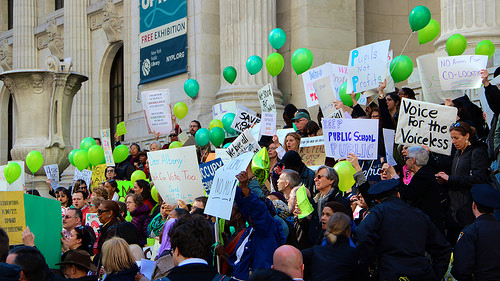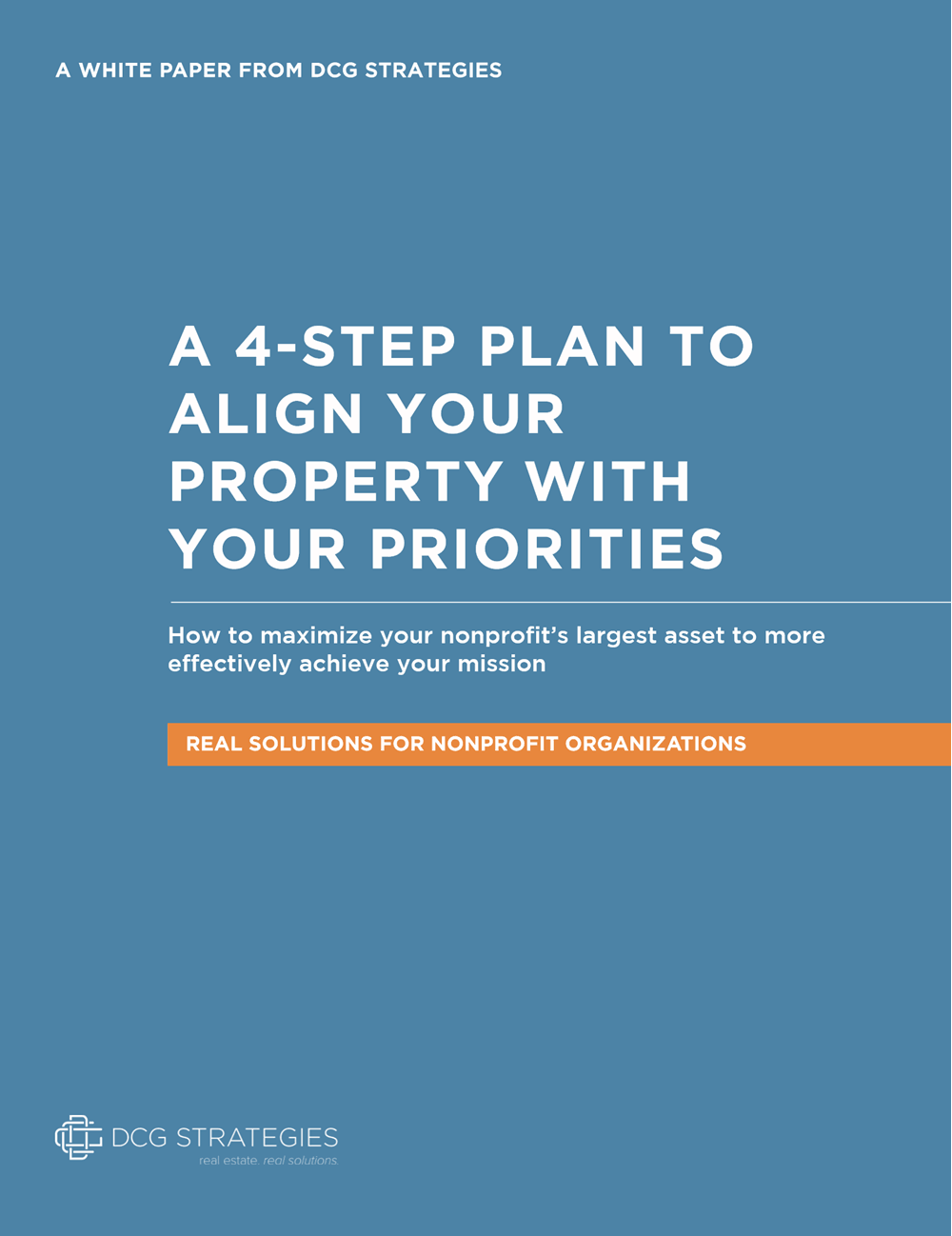 Charter schools have drawn protests around the country when they co-locate with public schools in the same building, as with this one in Manhattan. Fortunately, charter schools have several options to obtain private facilities in California.
Charter schools have drawn protests around the country when they co-locate with public schools in the same building, as with this one in Manhattan. Fortunately, charter schools have several options to obtain private facilities in California.
Image source: Flickr CC user Jkrincon
California has more than 1,000 charter schools, the most in the country. As the popularity of these independent, taxpayer-funded schools has grown, so too has the controversy over providing them with classrooms and facilities.
For example:
- The Los Altos School District tried to boot out the Bullis Charter School from their shared campus and move them to a community center. Bullis didn’t accept the new facility. Last year, a Santa Clara County judge stopped the district from evicting them, temporarily.
- LA Unified announced last year that it was kicking out Citizens of the World Charter School Mar Vista (CWC) from their shared campus after just one tumultuous year together under one roof. That year saw violence in the school, and neighbors filing complaints about traffic and parking.
- In 2013, more than 50 parents and teachers at Boyle Heights’ Lorena Street Elementary School staged a protest after it was announced that Extera Public Schools, a charter organization, would share the campus. Protesters complained that the announcement didn’t leave them enough time for planning.
Prop 39 Facilities Often Draw Controversy
All these charter schools ran into controversy when they went looking for space to teach their kids. They have another thing in common, too: they all used Proposition 39 to access classroom space and facilities.
New charter schools often use Prop 39, which makes it mandatory for California school districts to provide “reasonably equivalent” facilities to charter schools. So long as it meets the requirements, the charter school is guaranteed space, but often at the cost of drawing controversy. Districts and the charter schools have become locked in bad marriages. These become especially hot when districts opt to allow a charter school to co-locate in one of the district schools, and the two schools share playgrounds, fields, and classrooms. Charter schools find themselves pitted against parents, staff, and the neighborhood. Battles over charter schools are especially sad for the kids who have to read about their respective school boards and parents fighting in the newspapers.
Short-Term and Long-Term Options
A Prop 39 facility can be a good short-term or backup option for a charter school. Over the long term, however, the balance of power does not favor the charter school. For one, the school has to reapply each year for the space. If a charter school is using certain classrooms, for example, the district can opt to take them away, so long as the district provides an acceptable alternative. So Prop 39 facilities aren’t that stable. Secondly, a charter school is founded to be independent and unique. Most schools might naturally want to break away from the district by owning or leasing their own building at some point.
Charter schools don’t necessarily have to go the route of Prop 39, even in the short term. Fortunately, they have several short and long-term options to lease or buy private facilities. Some of these include:
Take Over a Closed School: Districts often have surplus property that can be bought cheaply or leased long-term. The advantages are that the space has classrooms, parking, playgrounds, and fields – everything a charter school could need.
Rent a Church: Churches can be a long-term or short-term option. Charter schools sometimes use the facilities Monday through Friday while the church isn’t as active. This is typically a low-cost option, and many churches come equipped with classrooms, a stage, a playground, and a cafeteria.
Move to a Warehouse: Warehouses can be renovated into a permanent home for a charter school, offering ample space and the flexibility to design classrooms and activity areas that meet the school’s goals.
Use Commercial Office Space: School districts have been known to move classrooms into office buildings under long-term leases. Office space can usually be turned into classrooms rather easily and offices tend to have good parking, in addition to being served by bus routes.
Build Your Own School: Established, financially secure charter schools can consider building a new school. While new construction is the most costly option and will take a minimum of 18 months, nothing beats the flexibility of designing a facility to the charter school’s needs.
In California, charter schools are here to stay. So too, it seems, will be their battles to find stable places to teach their kids. Before leaping to a Prop 39 facility, the charter school should consider all the options, including all the private options, the location, the benefits of leasing vs. buying, and matching a facility to the special needs of the charter. And as always, these decisions should be made with the help of an experienced charter school consultant and real estate professional.
If you are planning a new charter school, you don’t have to go it alone. You can get a thorough analysis of all the available facility options from a consultant whose community values align with your own. Contact DCG Real Estate today to learn more.





